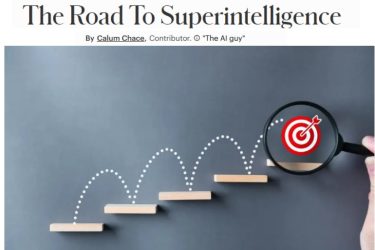The fifth in a series of un-forecasts*, little glimpses of what may lie ahead in the century of two singularities.
Julia felt the blast more than she heard it. The deep rumble almost seemed to come from inside her. She had once experienced an earthquake, several years ago, and her first thought was that this was another one. But that had been in Indonesia, where earthquakes were fairly common; an earthquake in East London was unheard of.
Instinctively she flicked her phone into life, and it brought her up to speed. The newsfeeds had nothing yet, but Twitter was already alight with information. The blast had been a massive explosion at an electricity sub-station about fifteen miles from where she stood. Eyewitnesses thought that a lot of people had been killed, and many more injured. Then the videos started spilling into her feed, and they were astonishing, horrific. The videos were surprisingly clear considering the stress the people taking them must be going through, but Julia didn’t stop to consider the amazing performance of smartphone cameras these days. What she was looking at was shocking. The blast area was huge and it was clear the damage was enormous.
She went back to her favourite newsfeed, which was catching up with Twitter. It told her that two organisations had claimed responsibility. One was a jihadist Islamic organisation, but its star had faded years ago, and its routine attempts to claim the “credit” for any piece of mayhem were generally dismissed. The other was a more likely culprit: JUST – the Jobless Union for Socialist Technology. Starting out as a think tank, a decidedly non-violent talking shop for people interested in how society could adjust to technological unemployment, JUST had gradually been taken over by militants as more and more people found themselves on subsistence welfare incomes, completely unable to find a job.
Julia realised that this attack was a watershed event, maybe even on the scale of 9/11. Sirens screamed as every available rescue services vehicle raced to the site. Then she looked up, and she noticed something odd. The air was full of drones, and they were all heading to the site as well. Most of them were Amazon delivery drones, but she had never seen so many in the air before.
She looked back to her phone, where the explanation awaited her. The government had commandeered, temporarily, the entire fleet of Amazon drones, and every other drone whose owner they could track down. At the time it was just one detail of an extraordinary and terrible time, but in the months to come Julia would recognise it as one of the most important things to happen that day. It was the day when the government put eyes in the sky. Amazon would get control of their drones back the next day, but from now on the feeds from the cameras on board would always be available to something like thirty different government agencies on demand. From now on there would always be an eye in the sky, watching.
* This un-forecast is not a prediction. Predictions are almost always wrong, so we can be pretty confident that the future will not turn out exactly like this. It is intended to make the abstract notion of technological unemployment more real, and to contribute to scenario planning. Failing to plan is planning to fail: if you have a plan, you may not achieve it, but if you have no plan, you most certainly won’t. In a complex environment, scenario development is a valuable part of the planning process. Thinking through how we would respond to a sufficient number of carefully thought-out scenarios could well help us to react more quickly when we see the beginnings of what we believe to be a dangerous trend.


